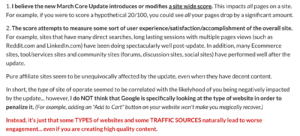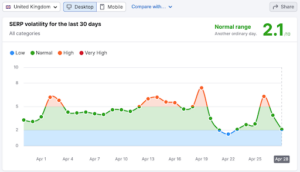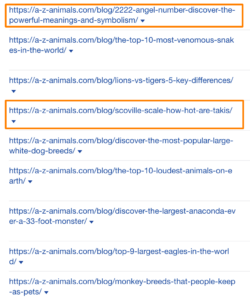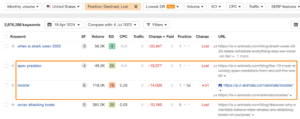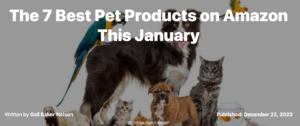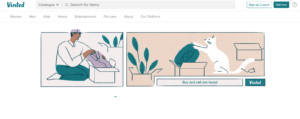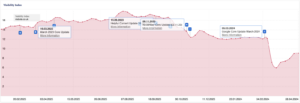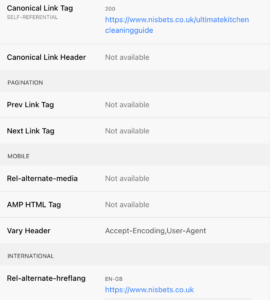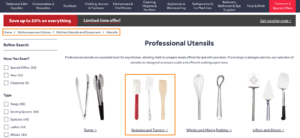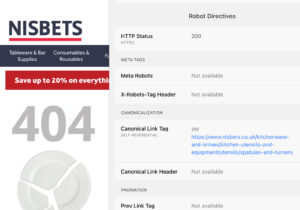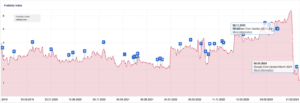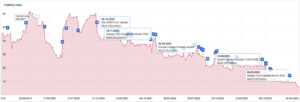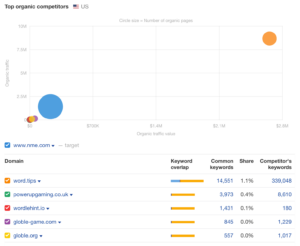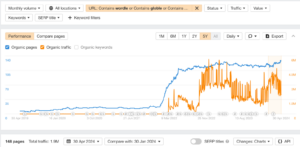Another publisher impacted by this update is countryliving.com, although organic visibility has been for the most part consistent over the last 5 years, there has been a decline following both the Helpful Content Updates in August 2022 and September 2023. The latest update has seen their traffic decline by 27%.

This seems to have impacted one directory more than others:
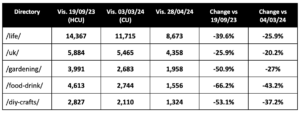
While there are no obvious technical, content or UX-based reasons that would be driving this decline, we suspect it could align with Google pushing more of an ecommerce intent in the SERPs. For example, the site consistently ranked in the top 3 for the keyword ‘flowers’ in the US but no longer ranks in the top 100.
Comparing rankings and SERPs as a result of the Helpful Content update in September 2023 with the most recent update on the 30th April 2024, the mixture of intent could be accountable for its decline, with the latest SERP favouring commercial and transactional websites.

The page that ranked has also changed since September, previously it was “62 Best Types of Flowers (With Pictures!) for Your Garden” which has now increased to “86 Best Types of Flowers (With Pictures!) for Your Garden”.
When you compare the older version to the latest update, in a lot of instances, the content has been improved. The old post had minimal content for each flower and a small amount of related content, but it was in alphabetical order which could have been easier to follow for the reader.
The new update is numbered for each flower, and in some cases contains more content with greater relevance to that specific flower.
However, there is no order to the list, e.g. alphabetical order, colour, season it blooms or how easy it is to look after, and as you get further down the list, the amount of information for each flower has not increased since the original post. So, while the content isn’t necessarily poor, increasing the amount of content for this post doesn’t make it more useful.
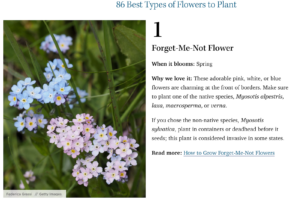

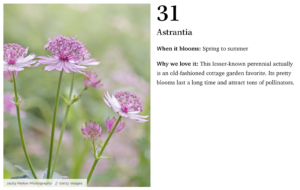
Delish.com has suffered the same fate as countryliving.com – a decline in visibility starting from the algorithm updates in August 2023.

Delish and Country Living are owned by the same company Hearst. Which led us to look at other brands within this network such as Good Housekeeping. Again, it follows the same trend and in fact, Good Housekeeping has seen a bigger drop:
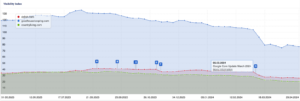
These three sites in some cases have very similar content:
- https://www.delish.com/cooking/recipe-ideas/g577/recipes-with-rotisserie-chicken/
- https://www.countryliving.com/food-drinks/g2811/recipes-with-rotisserie-chicken/
- https://www.goodhousekeeping.com/food-recipes/easy/g32160791/leftover-rotisserie-chicken-recipes/
The Country Living post is old and no longer has content on it, it even links to the Delish version:
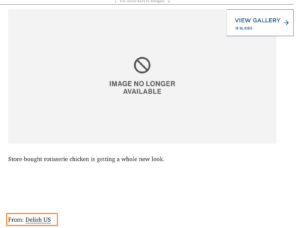
What’s worse is that the Country Living post is set to Noindex but has a canonical pointing to the Delish post
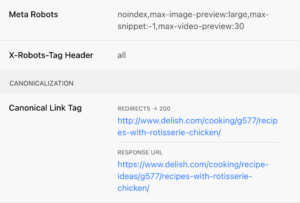
Summary
What has been one of the biggest algorithm updates we’ve ever seen, is the change from sites which previously were performing well perhaps down to link acquisition or brand advantages who are no longer being rewarded for low quality, unhelpful content.
Some incredible research pieces are starting to emerge following this update, from the likes of Eric Lancheres which covers some of the sites / topics mentioned here. We love his theory around sites that are going the extra mile to engage users, keep users on site and prioritising slick and frictionless user journeys, in addition to acquiring traffic from other sources such as social media and email, driving positive gains since the update:
